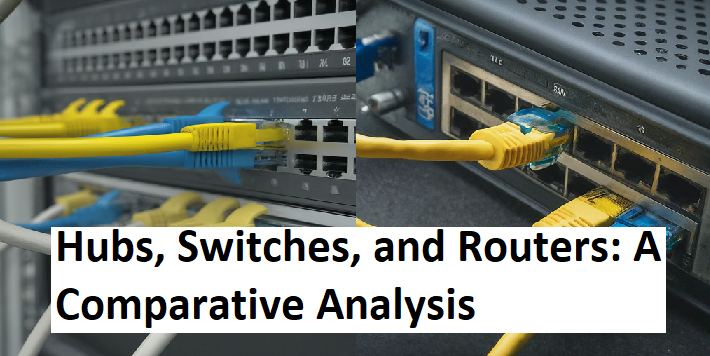Hubs, Switches, and Routers: A Comparative Analysis – Learn the differences between hubs, switches, and routers, three essential networking devices. Understand their functionalities, advantages, and disadvantages to make informed decisions for your network setup.

In the realm of computer networking, hubs, switches, and routers play crucial roles in connecting devices and facilitating data transmission. While they may seem similar at first glance, each device serves a distinct purpose and operates in a different manner.
Hubs
- Functionality: A hub is a simple network device that acts as a central connection point for multiple devices. It broadcasts all incoming data packets to every connected device, regardless of the intended recipient.
- Operation: When a device transmits data, the hub receives it and forwards it to all other connected devices. This indiscriminate broadcasting can lead to network congestion and reduced performance, especially in larger networks.
- Advantages: Inexpensive and easy to set up.
- Disadvantages: Low performance, susceptible to network congestion, and limited scalability.
Switches
- Functionality: A switch is a more intelligent device that can selectively forward data packets based on the destination address. It maintains a table of MAC addresses (Media Access Control addresses) for each connected device and uses this information to direct data packets to the intended recipient.
- Operation: When a device transmits data, the switch examines the destination MAC address and forwards the packet only to the device with that specific address. This targeted approach significantly improves network performance and reduces congestion.
- Advantages: Higher performance, better scalability, and reduced network congestion compared to hubs.
- Disadvantages: Slightly more expensive than hubs.
Routers
- Functionality: A router is a sophisticated network device that operates at the network layer of the OSI model. It is responsible for forwarding data packets between different networks, often across the internet. Routers use routing protocols to determine the best path for data packets to reach their destination.
- Operation: Routers examine the destination IP address (Internet Protocol address) of each data packet and use routing tables to determine the optimal route. They may need to forward packets through multiple networks to reach their final destination.
- Advantages: Enables communication between different networks, provides network segmentation, and can implement security features like firewalls.
- Disadvantages: More complex to configure and manage than hubs or switches.
Hubs, Switches, and Routers: A Comparative Analysis – Key Differences
| Feature | Hub | Switch | Router |
|---|---|---|---|
| Functionality | Broadcasts data to all connected devices | Selectively forwards data based on MAC address | Forwards data between different networks |
| Operation | Indiscriminate broadcasting | Targeted forwarding | Uses routing protocols |
| Performance | Low | High | High |
| Scalability | Limited | Good | Good |
| Cost | Inexpensive | Moderate | Expensive |
In summary, while hubs, switches, and routers all serve the purpose of connecting devices in a network, their functionalities and capabilities differ significantly. Hubs offer simplicity and affordability but suffer from performance limitations. Switches provide better performance and scalability by selectively forwarding data. Routers enable communication between different networks and offer advanced features like routing and security. The choice of device depends on the specific requirements of the network, including size, performance needs, and security considerations.